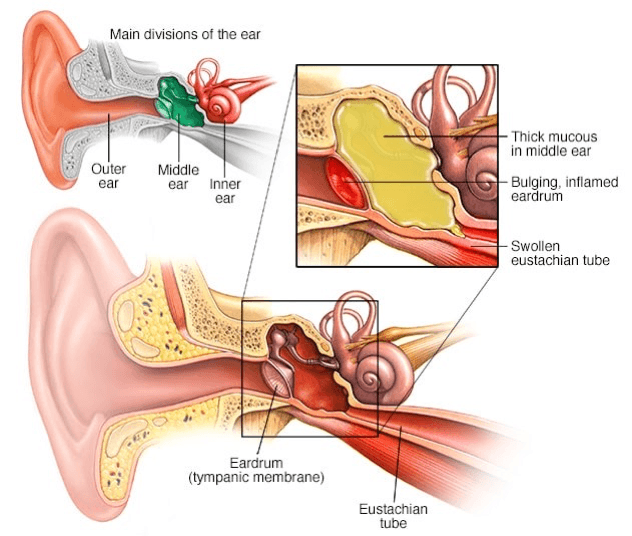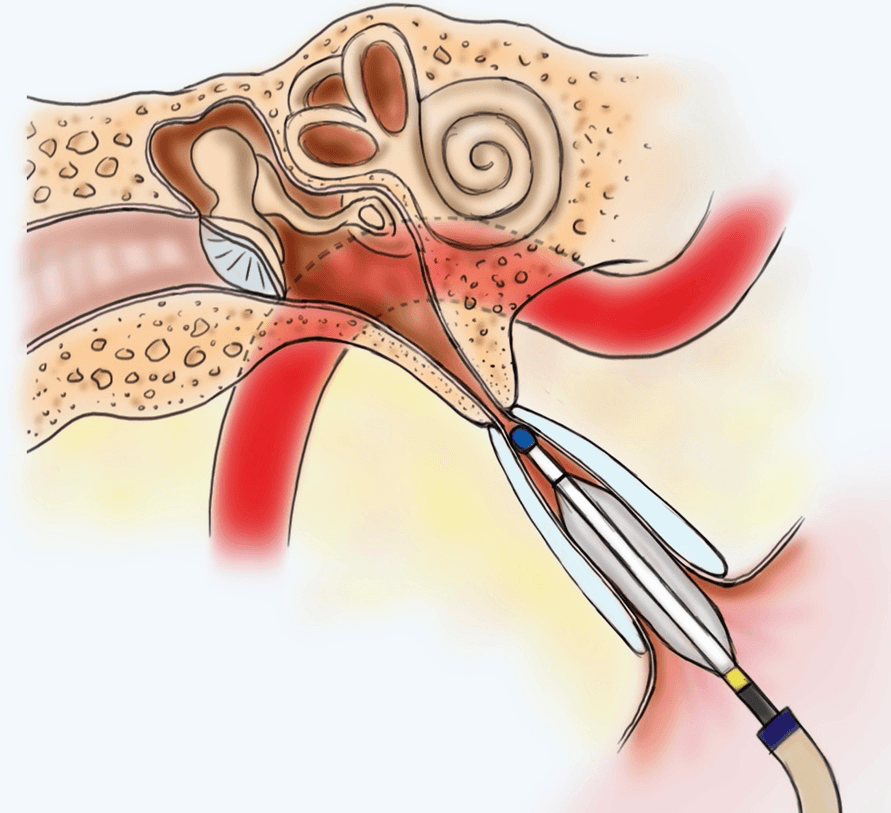The eustachian tube is a dynamic organ, meaning that it opens and closes like a valve. Its normal resting state is closed, but it periodically opens briefly to equalize pressure, usually when the person swallows or yawns. The tube is small and horizontally oriented in young children, and can become congested, usually from allergies, infection in the sinuses, or enlargement of the tonsils or adenoid. When this happens, the tube may not open properly, and the result is serous fluid that collects in the middle ear. This condition is known as “serous otitis media” or “otitis media with effusion” and causes conductive hearing loss, ear pain, and sometimes fever in young children. The fluid may then become infected with bacteria and turn into pus. This is known as “acute otitis media” and is usually treated with oral antibiotics. If multiple courses fail to give relief or if the child has more than six infections in a twelve-month period, he/she may benefit from the placement of ventilation tubes, otherwise known as pressure equalization tubes. The tubes provide drainage and ventilation to the middle ear and usually fall out in a few months. This is the most common surgical procedure in the United States and is performed under anesthesia.

Most children outgrow the need for ventilation tubes by around the age of seven, because by that time the skull is nearly adult size, and the Eustachian tube usually begins to function better. Some patients continue to have dysfunction of the Eustachian into adulthood, which can lead to persistent or recurrent middle ear fluid, chronic otitis media (middle ear fluid or infection lasting more than six months), or adhesive otitis media (retracted ear drum from inadequate ventilation to the middle ear). This condition can range from mild to severe and can lead to perforations in the ear drum, drainage, pain, mastoiditis (fluid or infection in the mastoid bone), ossicular discontinuity (disruption of the middle ear bones) and cholesteatoma (cyst of trapped skin debris in middle ear). A different type of ventilation tube is sometimes used in adults, called a “T-tube”, which is designed to stay in the ear drum longer than the “grommet-style” tubes used in children, possibly even permanently. Ventilation tubes can often be placed in the ears of adults while they are awake under local anesthesia.

There is no definitive cure for Eustachian tube dysfunction, but a new procedure called balloon dilation of the Eustachian tube has shown promise in helping to alleviate the symptoms for some patients. In this procedure, a very thin balloon is passed over a guide wire through the nose into the Eustachian tube and inflated for two minutes. This procedure is intended to permanently dilate (open) a congested Eustachian tube so that it can ventilate the middle ear more effectively, improving hearing and reducing the likelihood of further complications. It can be performed on older children and adults with the patient awake or under anesthesia. The physicians at the Shea Clinic can discuss this and other treatment options with you for your Eustachian tube dysfunction. They may also recommend an allergy/sinus workup or other treatment, as allergies and chronic sinus disease are closely related to Eustachian tube dysfunction.
When you lose your hearing, those around you suffer the most.
Connect with your loved ones

